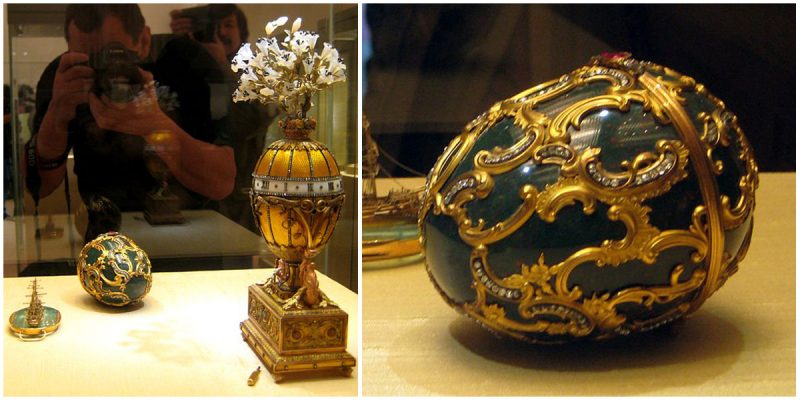The Memory of Azov Egg (or the Azova Egg) is a jeweled Easter egg made under the supervision of the Russian jeweler Peter Carl Fabergé in 1891 and was commissioned by Emperor Alexander III for his wife, Maria Feodorovna, to commemorate their 25th wedding anniversary. It’s one of the few Fabergé eggs that has never left Russia.
Carved from a solid piece of heliotrope jasper and decorated in the Louis XV style with a superimposed gold pattern, diamonds, and chased gold flowers, the Memory of Azov Egg is skilfully executed down to the smallest details including tiny platinum boats, anchors on chains, and cobweb-thin golden ropes on masts.
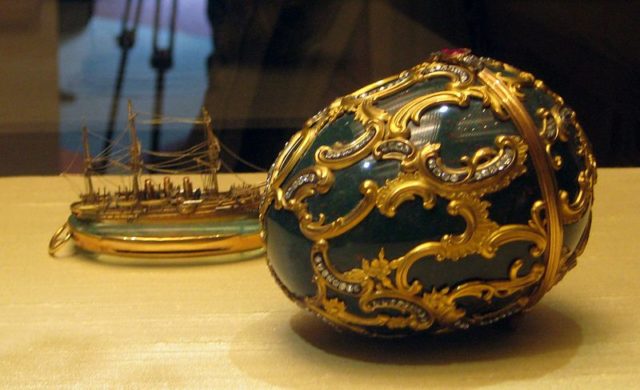
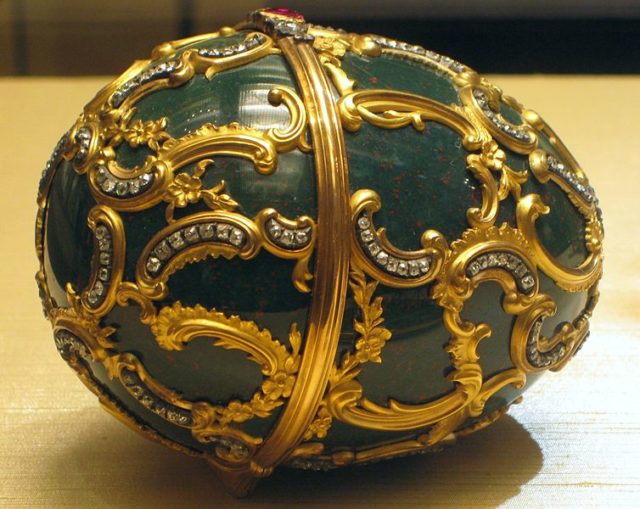
Like all of the Imperial Easter eggs, the “Memory of Azov” Easter Egg also has a built-in surprise: a miniature replica of the Imperial Russian Navy cruiser Pamiat Azova (Memory of Azov), executed in red and yellow gold and platinum, and with portholes set with small diamonds for windows.
The model ship is then set on a piece of aquamarine to represent water. The cruiser In Memory of the Azov was named in honor of the Azov, the first Russian battleship to be awarded the St. George flag.
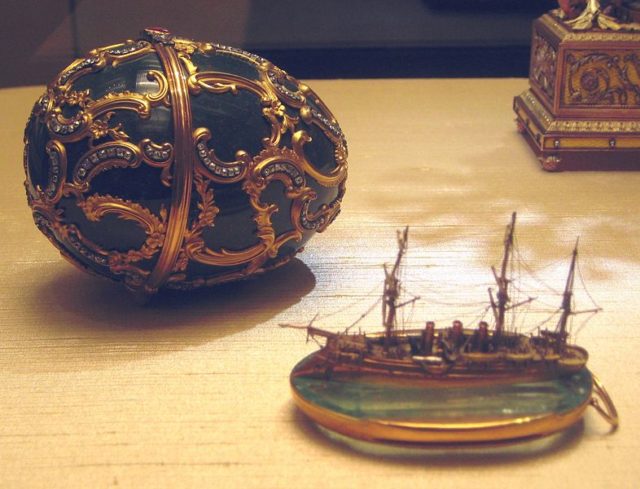

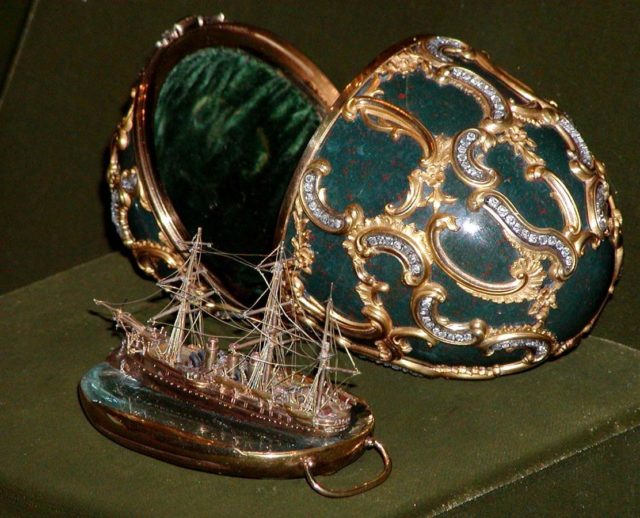
The egg commemorates the voyage undertaken by the Tsar’s sons Tsarevitch Nicholas, later known as Tsar Nicholas III, and his younger brother Grand Duke George aboard the Pamiat Azova to the Far East in 1890, to broaden the outlook of the future Tsar.
At the time, Grand Duke George was suffering from tuberculosis and the voyage was a disaster because George’s condition worsened and Nicholas also sustained a serious head wound in the Ōtsu incident, an attempted assassination in Japan.
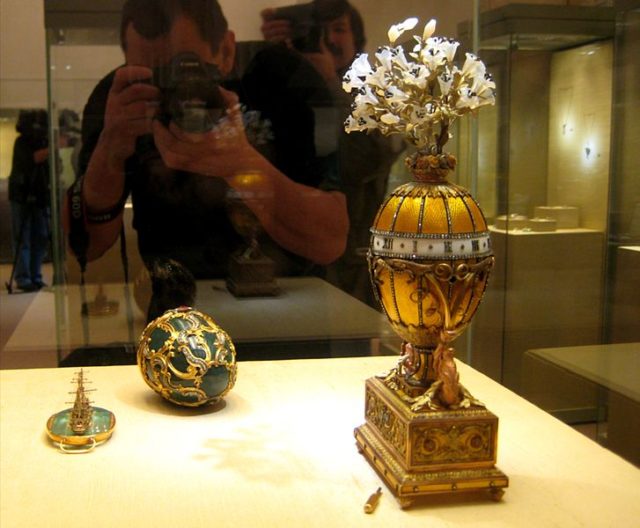
Although the Tsarina was presented with the egg before these events occurred, it apparently was never one of her favorite pieces.
Read another story from us: The lost art of fore-edge painting
Today, the Memory of Azov Egg is owned by The Kremlin Armoury or Armoury Chamber, one of the oldest museums of Moscow, established in 1808 and located in the Moscow Kremlin.
